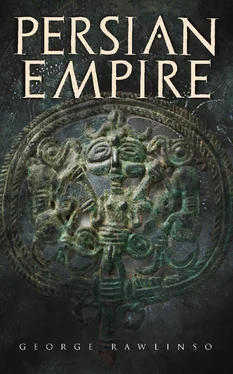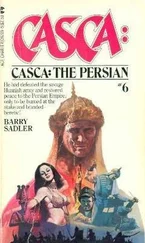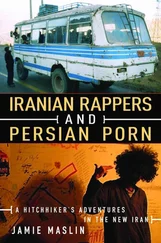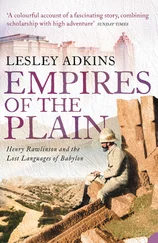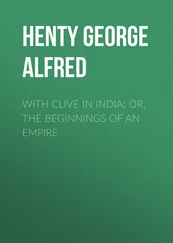The low region lying south of the Great Plateau is neither extensive nor valuable. It consists of a mere strip of land along the coast of the Indian Ocean, extending a distance of about nine degrees (550 miles) from the mouth of the Persian Gulf to Cape Monze, near Kurrachee, but in width not exceeding ten or, at the most, twenty miles. This tract was occupied in ancient times mainly by a race which Herodotus called Ethiopians and the historians of Alexander Ichthyophagi (Fish-Eaters). It is an arid, sultry, and unpleasant region, scarcely possessing a perennial stream, and depending for its harvests entirely upon the winter rains, and for its water during the summer on wells which are chiefly brackish. Tolerable pasturage is, however, obtainable in places even during the hottest part of the year, and between Cape Jask and Gwattur the crops produced are far from contemptible.
A small tract of coast, a continuation of the territory just described, intervening between it and Kerman, was occupied in the early Persian times by a race known to the Persians as Maka, and to the Greeks as Mycians. This district, reaching from about Cape Jask to Gombroon, is one of greater fertility than is usual in these regions, being particularly productive in dates and grain. This fertility seems, however, to be confined to the vicinity of the sea-shore.
To complete the description of the Eastern provinces two other tracts must be mentioned. The mountain-chain which skirts the Great Plateau on the north, distinguished in these pages by the name of Elburz, broadens out after it passes the south-eastern corner of the Caspian Sea till it covers a space of nearly three degrees (more than 200 miles). Instead of the single lofty ridge which separates the Salt Desert from the low Caspian region, we find between the fifty-fourth and fifty-ninth degrees of east longitude three or four distinct ranges, all nearly parallel to one another, having a general direction of east and west. Broad and rich valleys are enclosed between these latitudinal ranges which are watered by rivers of a considerable size, as more especially the Ettrek and the Gurgan. Thus a territory is formed capable of supporting a largish population, a territory which possesses a natural unity, being shut in on three sides by mountains, and on the fourth by the Caspian. Here in Persian times was settled a people called Hyrcani; and from them the tract derived the name of Hyrcania (Vehrkana), while the lake on which it adjoined came to be known as “the Hyrcanian Sea.” The fertility of the region, its broad plains, shady woods and lofty mountains were celebrated by the ancient writers.
Further to the east, beyond the low sandy plain, and beyond the mountains in which its great rivers have their source—on the other side of the “Roof of the World,” as the natives name this elevated region—lay a tract unimportant in itself, but valuable to the Persians as the home of a people from whom they obtained excellent soldiers. The plain of Chinese Tartary, the district about Kashgar and Yarkand, seems to have been in possession of certain Sacans or Scythians, who in the flourishing times of the empire acknowledged subjection to the Persian crown. These Sacans, who call themselves Huma-varga or Amyrgians, furnished some of the best and bravest of the Persian troops. Westward they bordered on Sogdiana and Bactria; northward they extended probably to the great mountain-chain of the Tien-chan; on the east they were shut in by the vast desert of Gobi or Shamoo; while southward they must have touched Gandaria and perhaps India. A portion of this country—that towards the north and west—was well watered and fairly productive; but the southern and eastern part of it must have been arid and desert.
From this consideration of the Eastern provinces of the Empire, we pass on naturally to those which lay towards the North-West. The Caspian Sea alone intervened between these two groups, which thus approached each other within a distance of some 250 or 260 miles.
Almost immediately to the west of the Caspian there rises a high table-land diversified by mountains, which stretches eastward for more than eighteen degrees between the 37th and 41st parallels. This highland may properly be regarded as a continuation of the great Iranean plateau, with which it is connected at its south-eastern corner. It comprises a portion of the modern Persia, the whole of Armenia, and most of Asia Minor. Its principal mountain-ranges are latitudinal or from west to east, only the minor ones taking the opposite or longitudinal direction. Of the latitudinal chains the most important is the Taurus, which, commencing at the southwestern corner of Asia Minor in longitude 29° nearly, bounds the great table-land upon the south, running parallel with the shore at the distance of sixty or seventy miles as far as the Pylse Cilicise, near Tarsus, and then proceeding in a direction decidedly north of east to the neighborhood of Lake Van, where it unites with the line of Zagros. The elevation of this range, though not equal to that of some in Asia, is considerable. In Asia Minor the loftiest of the Taurus peaks seem to attain a height of about 9000 or 10,000 feet. Further to the east the elevation appears to be even greater, the peaks of Ala Dagh, Sapan, Nimrud, and Mut Khan in the tract about Lake Van being all of them considerably above the line of perpetual snow, and therefore probably 11,000 or 12,000 feet.
At the opposite side of the table-land, bounding it towards the north, there runs under various names a second continuous range of inferior elevation, which begins near Brusa, in the Keshish Dagh or Mysian Olympus, and proceeds in a line nearly parallel with the northern coast to the vicinity of Kars. Between this and Taurus are two other important ridges, which run westward from the neighborhood of Ararat to about the 34th degree of east longitude, after which they subside into the plain.
The heart of the mountain-region, the tract extending from the district of Erivan on the east to the upper course of the Kizil-Irmak river and the vicinity of Sivas upon the west, was, as it still is, Armenia. Amidst these natural fastnesses, in a country of lofty ridges, deep and narrow valleys, numerous and copious streams, and occasional broad plains—a country of rich pasture grounds, productive orchards, and abundant harvests—this interesting people has maintained itself almost unchanged from the time of the early Persian kings to the present day. Armenia was one of the most valuable portions of the Persian Empire, furnishing, as it did, besides stone and timber, and several most important minerals, an annual supply of 20,000 excellent horses to the stud of the Persian king.
The highland west of Armenia, the plateau of Asia Minor, from the longitude of Siwas (37° E.) to the sources of the Meander and the Hermus, was occupied by the two nations of the Cappadocians and Phrygians, whose territories were separated by the Kizil-Irmak or Halys river. This tract, though diversified by some considerable ranges, and possessing one really lofty mountain, that of Argseus, was, compared with Armenia, champaign and level. Its broad plains afforded the best possible pasturage for sheep, while at the same time they bore excellent crops of wheat. The entire region was well-watered; it enjoyed a delightful climate; and besides corn and cattle furnished many products of value.
Outside the plateau on the north, on the north-east, on the west, and on the south, lie territories which, in comparison with the high region whereon they adjoined, may be called lowlands. The north-eastern lowland, the broad and rich valley of the Kur, which corresponds closely with the modern Russian province of Georgia, was in the possession of a people called by Herodotus Saspeires or Sapeires, whom we may identify with the Iberians of later writers. Adjoining upon them towards the south, probably in the country about Erivan, and so in the neighborhood of Ararat, were the Alarodians, whose name must be connected with that of the great mountain. On the other side of the Sapeirian country, in the tracts now known as Mingrelia and Imeritia, regions of a wonderful beauty and fertility, were the Colchians—dependants, but not exactly subjects, of Persia.
Читать дальше
